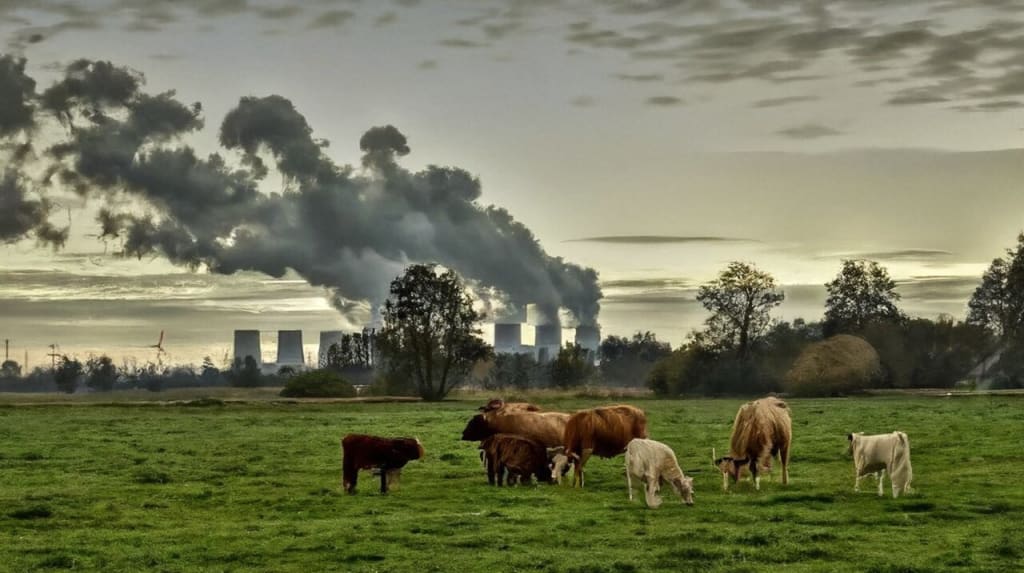How to Reduce Your Carbon Footprint: A Comprehensive Guide
"Taking Action: Practical Steps to Combat Climate Change"

In our rapidly changing world, the urgency to address climate change has never been more critical. With each passing year, the impacts of global warming become more evident, from extreme weather events to rising sea levels. As we navigate the challenges of the 21st century, one of the most effective ways individuals can contribute to combating climate change is by reducing their carbon footprint. Here’s a comprehensive guide to help you make meaningful changes and inspire those around you to do the same.
Understanding the Carbon Footprint Crisis
A carbon footprint is the total amount of greenhouse gases, particularly carbon dioxide (CO2), emitted directly or indirectly by human activities. These emissions trap heat in the Earth’s atmosphere, leading to global warming and climate change. The consequences of unchecked carbon emissions are dire, with impacts ranging from more frequent and severe droughts and wildfires to the destruction of ecosystems and loss of biodiversity.
1. Switch to Renewable Energy
The burning of fossil fuels for electricity and heat production is one of the largest sources of carbon emissions globally. Transitioning to renewable energy sources such as solar, wind, and hydroelectric power is essential to reducing our carbon footprint and mitigating climate change.
How it helps: Renewable energy sources are abundant, clean, and inexhaustible. Solar power, for example, harnesses energy from the sun using photovoltaic cells, converting sunlight into electricity without producing greenhouse gas emissions. Similarly, wind turbines harness the kinetic energy of the wind to generate electricity, providing a clean and sustainable alternative to fossil fuels.
2. Opt for Energy-Efficient Appliances
Energy-efficient appliances not only save you money on utility bills but also reduce energy consumption and carbon emissions. Look for appliances with the Energy Star label, which indicates they meet strict energy efficiency criteria set by relevant agencies.
How it helps: Energy-efficient appliances use less electricity to perform the same tasks as their less efficient counterparts, resulting in lower energy consumption and reduced carbon emissions. For example, Energy Star-certified refrigerators use advanced insulation and compressor technology to minimize energy waste, helping homeowners save money on energy bills while reducing their environmental impact.
3. Reduce, Reuse, Recycle
The production and disposal of goods contribute to carbon emissions through energy-intensive manufacturing processes and waste management. By adopting the principles of reduce, reuse, and recycle, we can minimize our environmental impact and conserve valuable resources.
How it helps: Reducing consumption reduces the demand for new products, thereby reducing the energy and resources required for manufacturing and transportation. Reusing items extends their lifespan and reduces the need for new production, while recycling diverts waste from landfills and reduces the energy and emissions associated with raw material extraction and processing.
4. Embrace a Plant-Based Diet
Animal agriculture is a major source of greenhouse gas emissions, particularly methane and nitrous oxide. Transitioning to a plant-based diet or reducing meat consumption can significantly lower your carbon footprint and contribute to a more sustainable food system.
How it helps: Livestock production, particularly cattle farming, is a significant contributor to greenhouse gas emissions due to methane emissions from enteric fermentation and nitrous oxide emissions from manure management. By reducing meat consumption, individuals can help reduce the demand for animal products and the environmental impact associated with livestock production.
5. Use Public Transportation or Carpool
Transportation accounts for a significant portion of global carbon emissions, primarily from the combustion of fossil fuels in cars, trucks, and airplanes. Choosing alternative modes of transportation such as public transit, biking, or carpooling can help reduce your carbon footprint.
How it helps: Public transportation systems, including buses, trains, and subways, are generally more energy-efficient than single-occupancy vehicles, as they can transport large numbers of passengers using less fuel per capita. Carpooling and ridesharing further reduce emissions by optimizing vehicle occupancy and reducing the number of vehicles on the road.
6. Support Local and Sustainable Businesses
Buying locally produced goods reduces carbon emissions associated with transportation and supports local economies. Additionally, choosing products from companies committed to sustainability and ethical practices helps drive positive change across industries.
How it helps: Local and sustainable businesses typically have shorter supply chains and prioritize environmentally friendly practices, such as energy efficiency, waste reduction, and ethical sourcing. By supporting these businesses, consumers can help reduce the carbon footprint of their purchases and promote sustainable economic development in their communities.
7. Conserve Water
Water scarcity is exacerbated by climate change, making efficient water use essential for both environmental sustainability and human well-being. By reducing water consumption and implementing water-saving practices, we can minimize our carbon footprint and help preserve freshwater resources.
How it helps: Energy is required to extract, treat, and distribute water, as well as to heat water for domestic use. By reducing water consumption, individuals can indirectly reduce energy consumption and associated carbon emissions, particularly in regions where water and energy resources are closely linked.
8. Reduce Energy Use at Home
Simple actions like turning off lights, unplugging electronics, and using energy-efficient lighting and appliances can significantly reduce your household’s energy consumption and carbon emissions.
How it helps: Energy-efficient lighting and appliances use less energy to perform the same tasks as their less efficient counterparts, resulting in lower energy consumption and reduced carbon emissions. Additionally, turning off lights and unplugging electronics when not in use helps eliminate standby power consumption, further reducing energy waste and environmental impact.
9. Plant Trees
Trees play a crucial role in mitigating climate change by sequestering carbon dioxide from the atmosphere and providing essential ecosystem services. Supporting reforestation efforts and planting trees in your community can help offset carbon emissions and combat deforestation.
How it helps: Trees absorb carbon dioxide during photosynthesis, storing carbon in their biomass and releasing oxygen into the atmosphere. By planting trees and restoring forest ecosystems, individuals can help sequester carbon and mitigate the impacts of climate change, while also providing habitat for wildlife and enhancing biodiversity.
10. Educate and Inspire Others
Sharing knowledge and inspiring action are essential for driving collective efforts to address climate change. By raising awareness and advocating for sustainable practices, individuals can help build a more resilient and sustainable future for all.
How it helps: Education and outreach initiatives can empower individuals to take action on climate change, from adopting sustainable lifestyle choices to advocating for policy changes at the local, national, and global levels. By sharing information and inspiring others to join the fight against climate change, individuals can amplify their impact and drive positive change in their communities and beyond.
About the Creator
Victor VinaHell
Hello! I'm Victor, an artist dedicated to sharing eco-information and some other random stuff! Through my articles, I aim to inspire and empower you to make changes that create a big impact on our planet. We can build a better world!
Enjoyed the story? Support the Creator.
Subscribe for free to receive all their stories in your feed. You could also pledge your support or give them a one-off tip, letting them know you appreciate their work.






Comments (1)
Interesting and delicious content. Keep posting more